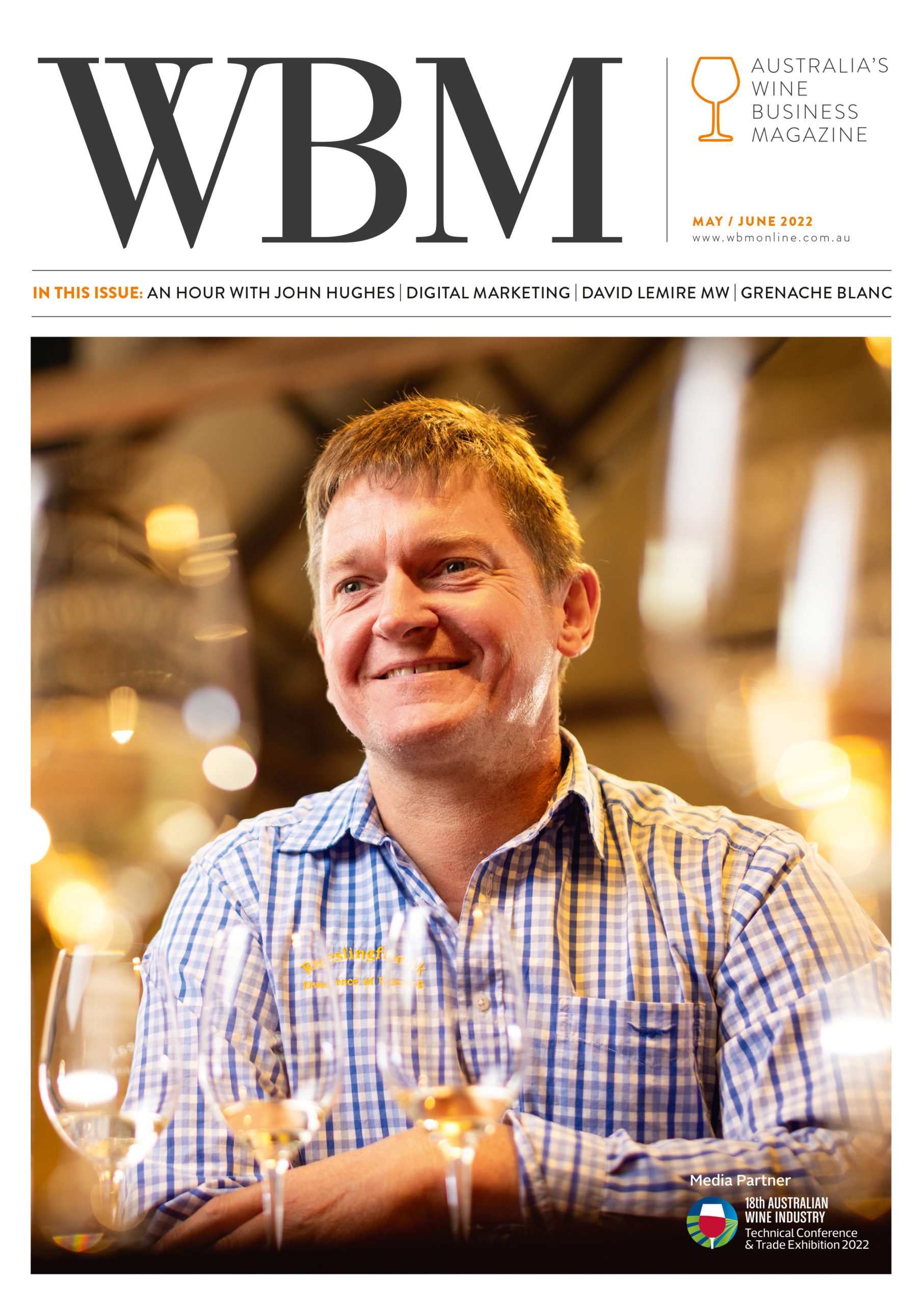So beyond the Technical Conference, where do we go from here? WBM doesn’t normally publish paid content from the magazine on this website, but in the interests of discussion about the future of the Australian wine industry, we publish David LeMire MW’s column from the May-June issue. Please give us some feedback.
We are in the eye of the storm. We are at one of the most fascinating moments in our evolution as a grapegrowing and winemaking country, with all kinds of challenges, and all the opportunities of the world reopening after Covid.
As we see our political leaders competing to offer a vision of leadership, what leadership do we want and need in the wine business?
What are the crucial issues facing us and who is best placed to provide the leadership that we need to give long term success, resilience, sustainability and profitability?
I asked a diverse group of people I consider to be leaders in wine – including grapegrowers, winemakers, educators, marketers and leaders of industry bodies – for their views on the top one or two issues facing the wine industry and who is best placed to provide leadership on those issues, and I got some great insights into what these leaders see as the most important challenges.
There were four main themes that each got multiple mentions: Industry organisations, Marketing Australian Wine, Sustainability and Quality. Below are the dot points summarising the responses and below that, my commentary:
Industry organisations
- There is ongoing concern about the number of peak organisations, the amount of duplication and the effectiveness of representation.
- One small producer was strongly critical of the lack of a strong and coordinated voice for small producers, felt their interests were not well represented, and that the full WET rebate should be reinstated or the WET tax abolished.
- From a different perspective of a larger producer, the WET rebate was seen as encouraging and supporting too many small brands, and preventing “effective consolidation”.
- With the number of bodies, both industry and government, at regional, state and national level, collaboration is crucial, but is currently not very effective, and there seems to be no clear plan that defines what each body does, to avoid duplication and waste.
- Giving producers value from the industry bodies rather than having bureaucracy consume funds.
- Having an effective consultation mechanism to feed through to peak industry bodies like Wine Australia.
There are lots of divisions in the industry, between growers and producers, between different states and regions, between small and large producers.
Many producers outside of South Australia feel disconnected from the national peak bodies that are based in SA.
The organisations closest to the producers and best able to know and understand their needs are the regional associations.
However, the regional bodies tend to have scarce money and resources, and limited influence on the agenda for the peak bodies.
What would happen if the levies paid by growers and producers went firstly to the regional bodies, who passed on an agreed percentage to the peak bodies, and had significantly more influence over them, as well as significantly more resources at regional level?
Strong regional bodies are a feature of the structure in Europe, and while their system is by no means perfect, it is worth us looking carefully at the ways in which it is effective.
To quote industry commentator Peter McAtamney: “Where once the appellation control system was painted by the New World as the Achilles’ heel of the Old, regional organisations all over Europe are putting into place programs designed to improve the soil, the vines, the vineyards, the cropping regimes and the winemaking so as to improve the quality, profitability and sustainability of each region.”
Marketing Australian Wine
- Spreading the risk in export markets was the number one marketing concern.
- Accessing government support for market diversification.
- Building sustainable long-term markets.
- Retail concentration in Australia was also raised as a concern that doesn’t get so much airtime at the moment, but that has been quietly growing.
- Connecting with consumers and listening to them so that we stay relevant and attract the next generation.
Wine Australia is obviously one leading voice in developing export markets, and they do a tough job with limited resources. Having Wine Australia staff who have serious wine credibility hosting tastings and providing educational content (as Mark Davidson does in the USA) is a core function that could add a lot of value in Asia and Europe as well.
We need to be consistent with our market presence across a wide range of markets, and avoid being seen as opportunistic or fair-weather friends.
One of my concerns, not reflected in the comments from my survey, is the need to communicate messages about wine and health to the government and the public. This, along with lobbying government on taxation and industry support, are in my view the most important functions of Australian Grape & Wine.
Sustainability
- Managing climate change and in particular water security.
- Pursuing carbon neutrality but also “genuine sustainability measures beyond simplistic carbon offset schemes”.
- More transparent and credible certification of sustainability.
- Regenerative farming and biodiversity – in the view of one respondent, the term ‘sustainability’ “is quickly becoming a meaningless term” and a more holistic approach to land management is needed.
- Becoming a more diverse and inclusive industry, and not just in terms of gender and understanding the importance of this to the future relevance of wine in our communities.
Sustainability needs many advocates, but the local regional associations can play a key role in linking growers and producers with national bodies, and helping wineries understand the various options and opportunities for more sustainable viticulture and winemaking.
There are a myriad of organisations in this space, both wine specific (Sustainable Winegrowing Australia, the AWRI, ASVO) and non-wine specific (e.g. organic and biodynamic certification bodies).
There’s a large ecosystem that revolves around helping wineries protect their ecosystem. We also need to be aware of the growing expectation in export markets of more transparency, certification and authenticity in our sustainable messages.
Quality
- “The seminal issue that requires constant vigilance and championship is the focus on quality improvement.”
- Quality in the vineyard is a huge need and opportunity – “some regions with reputations as high-quality regions need to do much more to improve the quality of vineyards.”
- “It is remarkable how quickly and often this effort for improvement becomes sidelined by peripheral political issues.”
The comments on quality were fewer in number, but quite compelling, and the quality challenge is integral to marketing and sustainability. We have a robust wine show system, but much less focus on vineyard quality. Recognising and valuing great viticulture more highly and visibly can create huge value for the industry over the long term.
We can all be leaders in pushing the quality message, but in export markets Wine Australia and regional associations have a key role. One small but symbolic change would be to make value per litre the key metric that we use to measure our export performance. If that number is not healthy and increasing, then we have a major problem.

